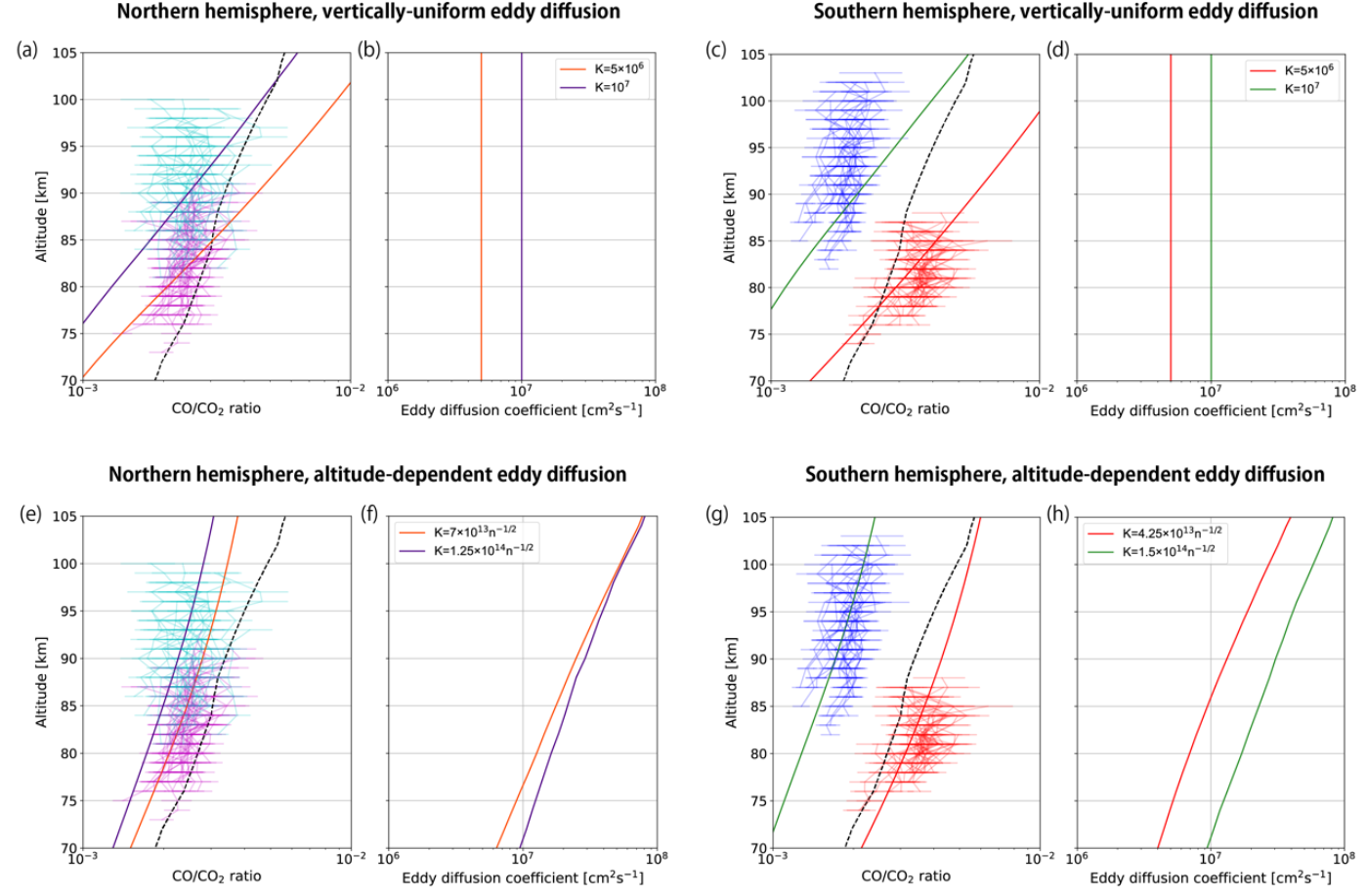GRL (2022) https://doi.org/10.1029/2022GL098485
Nao Yoshida, Hiromu Nakagawa, Shohei Aoki, Justin Erwin, Ann Carine Vandaele, Frank Daerden, Ian Thomas, Loïc Trompet, Shungo Koyama, Naoki Terada, Lori Neary, Isao Murata, Geronimo Villanueva, Giuliano Liuzzi, Miguel Angel Lopez-Valverde, Adrian Brines, Ashimananda Modak, Yasumasa Kasaba, Bojan Ristic, Giancarlo Bellucci, José Juan López-Moreno, Manish Patel
Using the Nadir and Occultation for MArs Discovery instrument aboard Trace Gas Orbiter, we derived the CO/CO2 profiles between 75 and 105 km altitude with the equivalent width technique. The derived CO/CO2 profiles showed significant seasonal variations in the southern hemisphere with decreases near perihelion and increases near aphelion. The estimation of the CO/CO2 profiles with a one-dimensional photochemical model shows that an altitude-dependent eddy diffusion coefficient better reproduces the observed profiles than a vertically-uniform one. Our estimation suggests that the eddy diffusion coefficient in Ls = 240 – 270 is uniformly larger by a factor of ∼2 than that in Ls = 90 – 120 in the southern hemisphere, while they are comparable in the northern hemisphere. This fact demonstrates that the eddy diffusion coefficient is variable with season and latitude.

(a, c, e, and g) Vertical profiles of the CO/CO2ratio estimated with the 1D model and observed by NOMAD SO. The broken lines represent the initial CO/CO2profiles in the model. For the northern (southern) hemisphere, the observed CO/CO2 profiles in Ls= 240 –270 are shown in light blue (blue), and those in Ls= 90 –120 are in magenta(red).
(b, d, f, and h) The determined eddy diffusion coefficients by the 1D model. Profiles are distinguished by colors and divided into two hemispheres.

